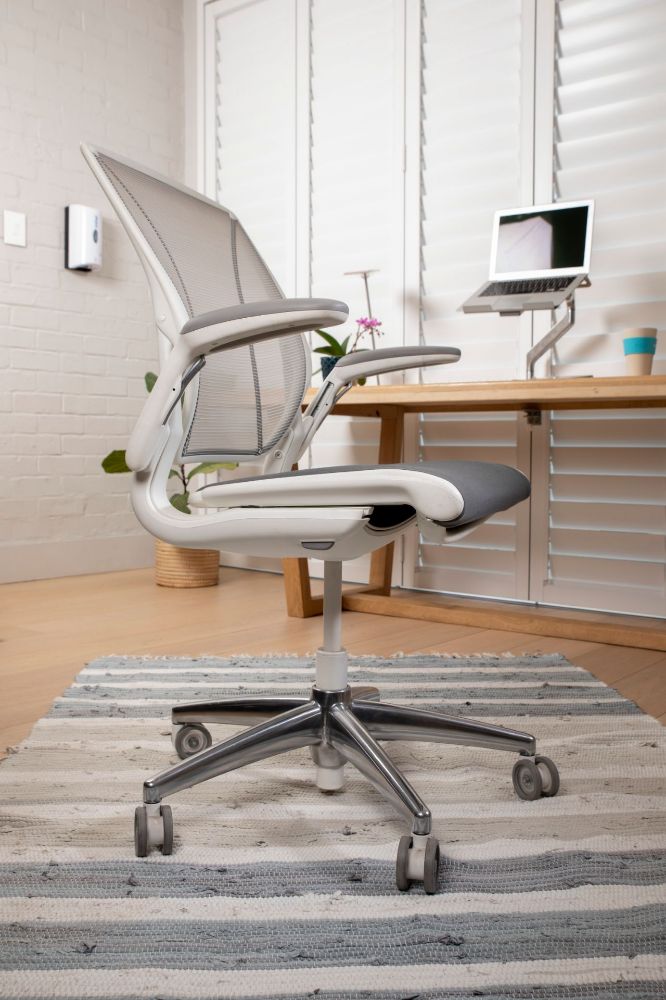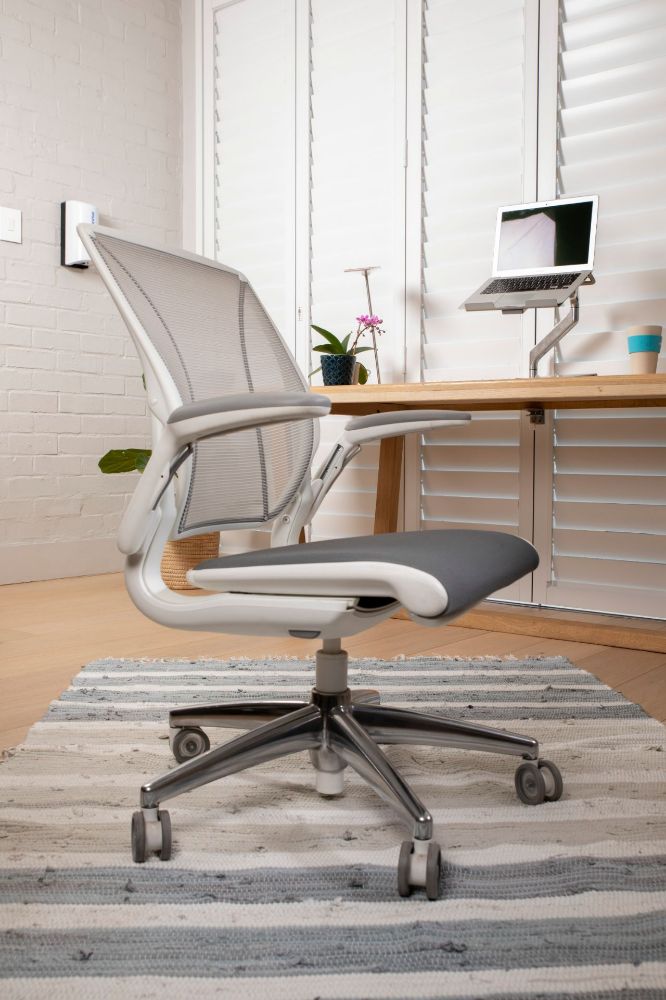What makes a chair ergonomic?
What makes a chair ergonomic?
Do you wear your brother-in-law’s extra length trousers or drive your pintsized grandmother’s car without adjusting the seat position and wing mirrors? Of course not. Yet all too often we work in chairs that don’t fit our unique frames. An ergonomic chair is designed to provide optimal support, comfort and adjustability to promote a healthy sitting posture, and investing in one is an investment in your health. Here are the key features that can significantly improve your comfort, reduce your risk of musculoskeletal issues and enhance your overall wellbeing during long hours of sitting:
1. Adjustable Seat Height:
A well-designed ergonomic chair should always have an easy-to-use pneumatic adjustment mechanism that allows you to raise or lower the seat height to your preferred level. Your feet should be resting comfortably on the floor with your knees at a 90-degree angle.
2. Responsive Backrest:
To prevent lower back pain, an ergonomic chair should provide enough lumbar support to maintain the natural curve of your spine. Whether you’re reclining to read a document or sitting forward to type, your backrest should respond freely to suit your task requirements. Ideally you want an intelligent, mechanism-free recline that uses the laws of physics and the sitter’s weight to provide the perfect amount of support through the full range of recline. No knobs or locks thank you very much.
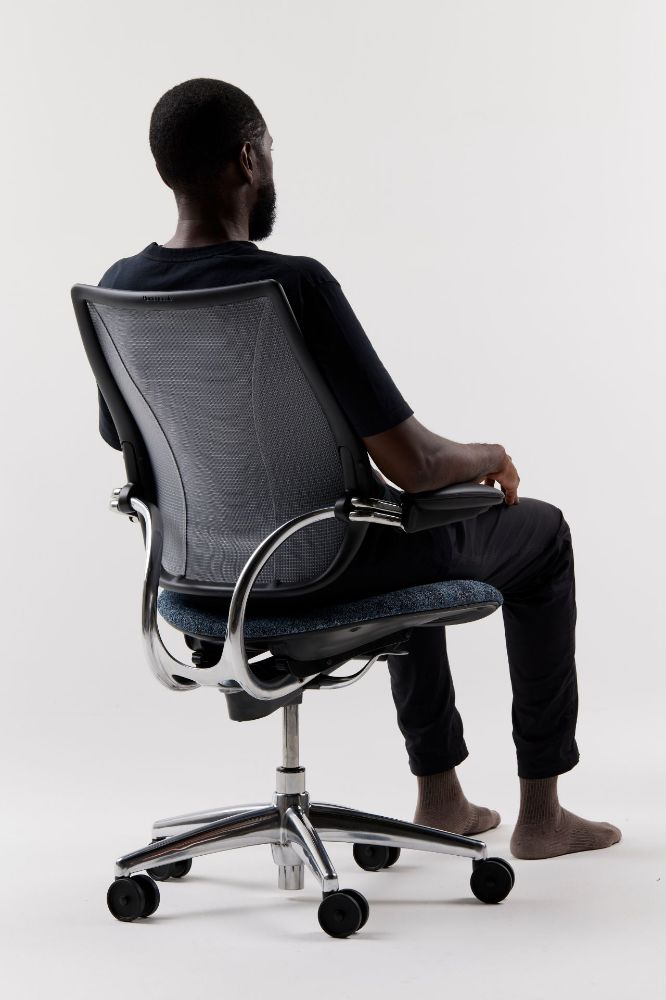


Backrest tension determines the ease or resistance with which your backrest reclines when you lean back. Tension is created through movement, with a well-designed chair intelligently offering just the right amount of resistance to match body weight and effort applied.
3. Adjustable Seat Depth:
To comfortably accommodate different body sizes, an ergonomic chair should have a seat with enough depth and width. Ideally, you should be able to adjust seat depth by moving the backrest or the seat pan forward or backward to ensure enough space between the back of your knees and the edge of the seat. To minimise neck and shoulder strain, it is essential to be able to raise and lower your chair’s armrests. Height adjustable armrests allow you to position them so that your arms rest comfortably, with each elbow forming a 90-degree angle.

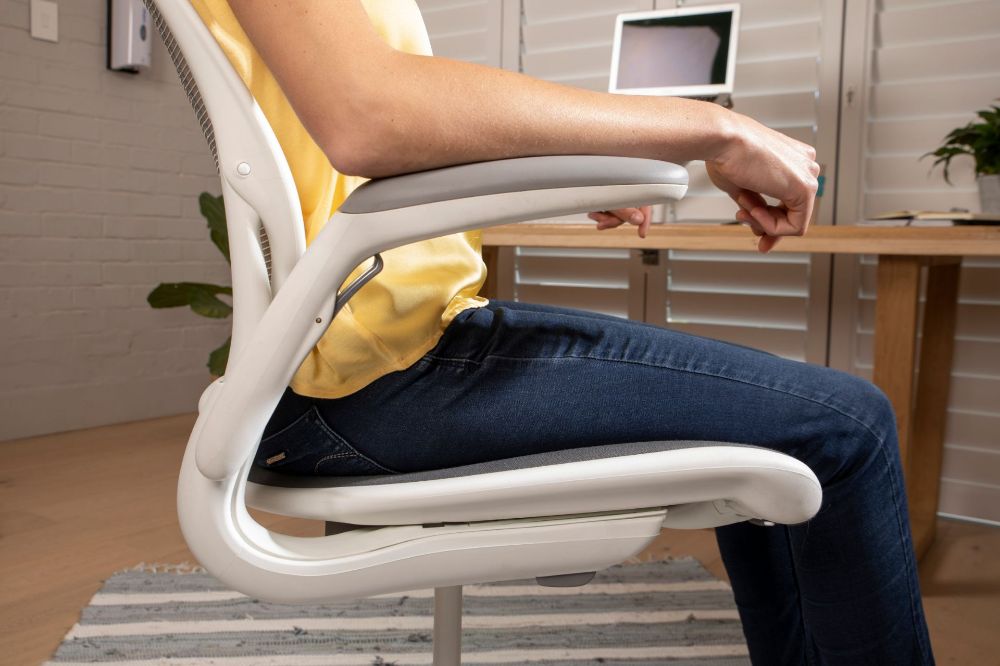
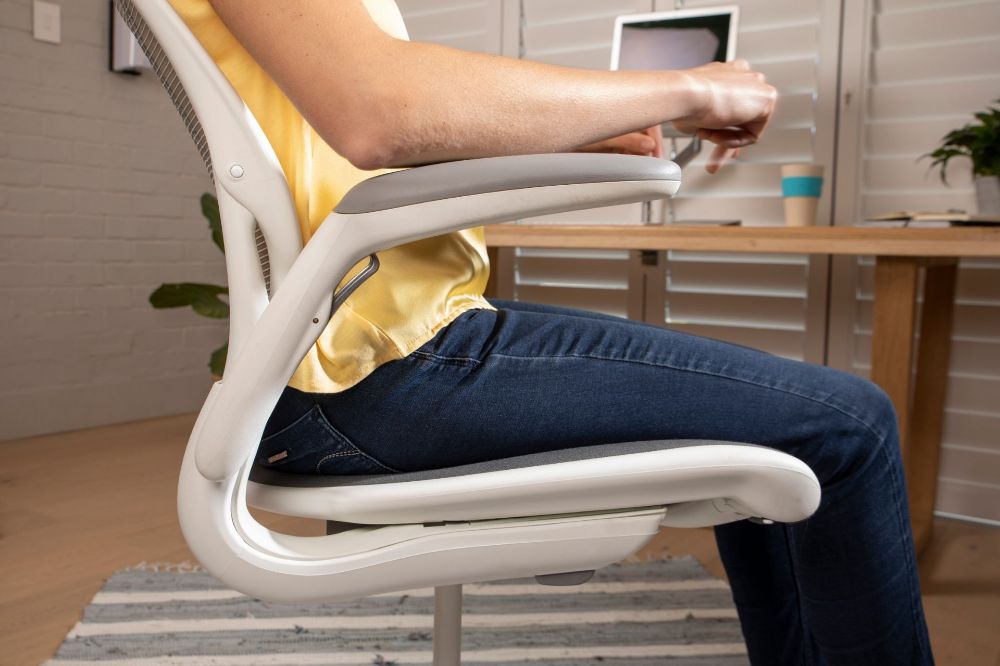
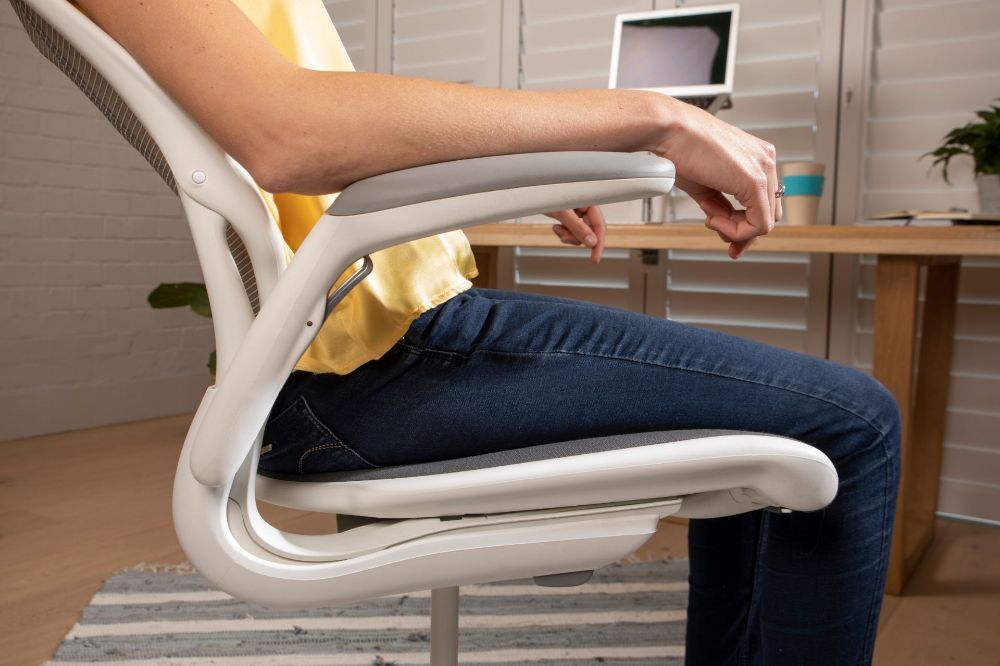

4. Adjustable Armrests:
To minimise neck and shoulder strain, it is essential to be able to raise and lower your chair’s armrests. Height adjustable armrests allow you to position them so that your arms rest comfortably, with each elbow forming a 90-degree angle.
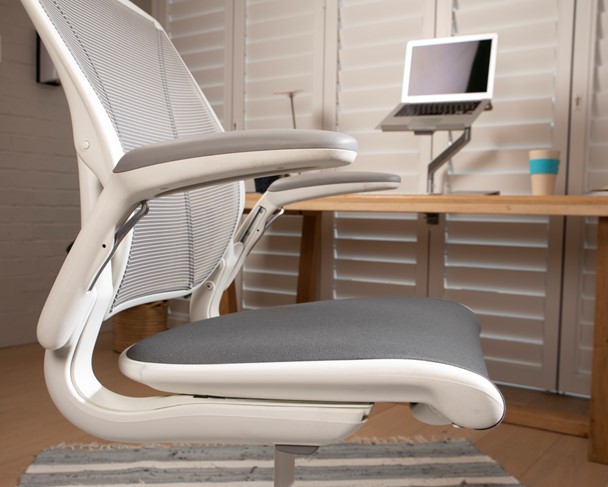
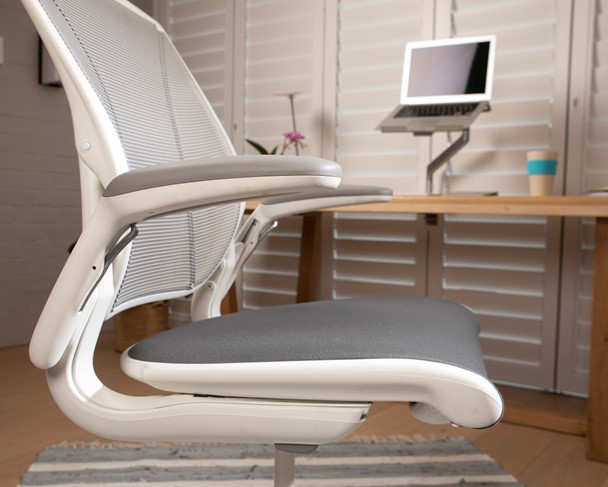
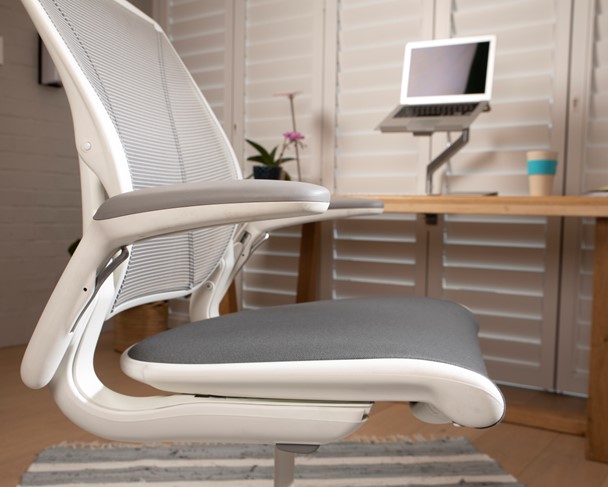
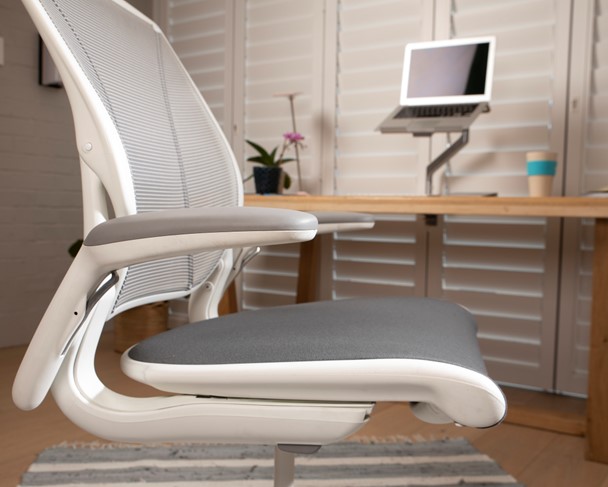
5. Encourages Movement:
You do not want to be locked into one position when you’re sitting for any length of time. Opt for a chair that automatically adjusts to whoever sits in it, instantly accommodating each user (regardless of their size and weight) and responding to their movements. Particularly in a shared office or co-working space – you want chairs that work for different people.
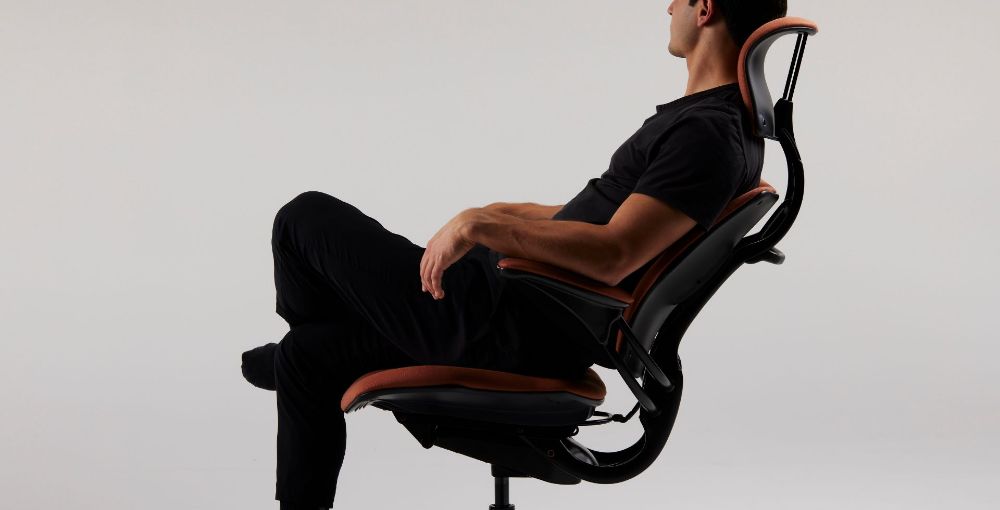
You might have noticed some repetition of the words ‘adjustable’ and ‘automatic’ in the points above… Kind of tells you all you need to know. Everyone’s body is different, so it is imperative to choose a chair you can fine tune to your specific needs, ideally one that automatically adjusts to your physiology and movement. Then test it out. Would you drive any distance barely able to touch the accelerator or hunched over the steering wheel? Would you buy a car without driving it first? So why work that way?

